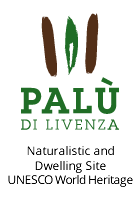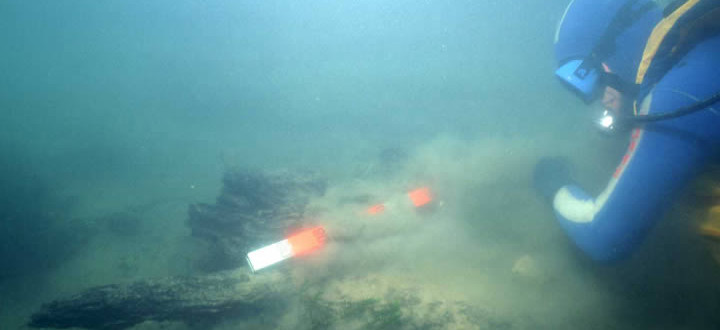Excavations and underwater surveys
The presence of archaeological remains in the area of Palù di Livenza was already reported in the first half of the nineteenth century, but the archaeological importance of the site was confirmed only in the 60s of last century, when it was dug a drainage canal in the center northern part of the basin which brought to light the remains of a pile dwelling village.
The abundant fragments of pottery and flint tools recovered in the channel’s soil were studied and published in 1973 by Canzio Taffarelli and Carlo Peretto, University of Ferrara, providing a first study of materials and introducing for the first time the location in the list of Italian prehistoric sites. The archaeological investigations were conducted from 1981 primarily for the purpose of protection, first by the Archaeological Superintendence of Padua and later of the Superintendent for the Environmental, Architectural, Archaeological, Artistic and Historical Heritage of Friuli Venezia Giulia. Since 2002, the initiatives of scientific research and protection activities are organized by the Superintendence for Archaeological Heritage of Friuli Venezia Giulia.

The research was initially undertaken in the form of core samples in order to define the depth and thickness of the archaeological stratigraphy and collect data of geological interest, given the difficulty of practicing the stratigraphic excavations in the basin.
30 years ago, the central part of the basin was in fact almost impassable on foot due to the high level of the water. Two checks conducted in 1981 and 1983, despite the lack of adequate facilities and drainage containment walls, allowed to shed light on the prehistoric deposit made of vertical poles thickened in lacustrine silt, despite the logistical difficulties encountered by the fast ascent of water and the collapse of the walls of the trenches. During the 80s of last century, new coring campaigns increased the geological information on the history of the basin.
Underwater explorations carried out in 1983 in the Molinetto/Livenzetta led to identify prehistoric wooden structures at several points and allowed the discovery of flint tools from Palaeolithic Age.
In 1987 diving activities were conducted with the support of the Technical Service for Underwater Archaeology (STAS) of the Ministry for Cultural Heritage, who confirmed the wide distribution in the submerged part of the basin of prehistoric remains and wooden structures.

Between 1989 and 1994 , surveys were concentrated in the area of the drainage channel at the center of the basin where were found numerous poles and wooden beams of the Neolithic lake village.
The research carried out in the channel were made to highlight, detect and sample the prehistoric wooden structures.
The last campaign was conducted in 1994 using traditional techniques of archaeological excavation in the presence of a current water level of 20-50 cm, and it was still possible to highlight and document accurately a complex tangle of wooden elements, sampled for dendrochronological analysis and determination of tree species.
New underwater exploration, carried out in 1999 under the project DAFNE, allowed to check the state of preservation of archaeological deposits in several places subject to erosion and to realize the stratigraphy of a submerged section.
Recent underwater surveys by the group Reitia (Documentation for Archaeology in Conegliano – TV) were made in the Santissima in order to verify the state of preservation of submerged wooden structures already identified in the past and documenting new ones.

« Il Palù e il fiume Livenza Aree umide e siti archeologici »



